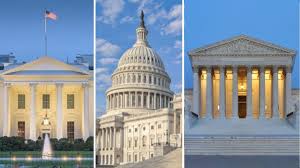A Balanced Framework of Governance for the Semi Presidential System

In the world of political systems, the semi presidential system stands out as a unique and intricate model of governance that combines elements of both presidential and parliamentary systems. This dynamic framework, also known as a mixed or hybrid system, has been adopted by several countries to achieve a delicate balance between executive power, legislative authority, and political stability. Let’s delve into the nuances of the semi-presidential system, exploring its features, benefits, and challenges.
Defining the Semi Presidential System
The semi presidential system is characterized by the coexistence of a president and a prime minister, each holding distinct but interrelated roles within the government. In this system, the president serves as the head of state and is often directly elected by the people, while the prime minister heads the government and is accountable to the legislature.
Key Features of the Semi Presidential System
- Dual Executive: One of the defining features of the semi presidential system is the presence of two executives—the president and the prime minister. The president represents the unity and identity of the nation, while the prime minister is responsible for day-to-day governance and policy implementation.
- Shared Powers: While the president holds significant powers related to foreign affairs, defense, and certain appointments, the prime minister and the cabinet manage domestic policies, legislation, and administration.
- Interdependence: The president and the prime minister share power and responsibilities, with their roles often intertwined. The level of cooperation or competition between the two figures can greatly influence the system’s functionality.
- Accountability: The dual executive structure introduces an element of checks and balances. The prime minister is accountable to the legislature and can be dismissed through a vote of no confidence, while the president remains directly accountable to the electorate.
- Stability and Flexibility: The semi presidential system aims to combine the strengths of presidential and parliamentary systems. It provides a stable executive branch while allowing for flexibility in forming coalitions and adapting to changing political dynamics.
Benefits of the Semi Presidential System
- Balanced Power: The semi presidential system prevents excessive concentration of power in a single individual or institution. It divides executive authority, reducing the risk of authoritarianism.
- Direct Representation: The direct election of the president by the people ensures a degree of popular legitimacy, making the system more responsive to citizens’ preferences.
- Political Stability: The presence of both a president and a prime minister can help stabilize the political landscape, especially in countries with diverse or fragmented political parties.
- Efficient Governance: The combination of executive and legislative powers can lead to quicker decision-making and policy implementation.
Challenges and Potential Pitfalls

- Potential for Conflict: In some cases, tensions between the president and the prime minister can arise, leading to political gridlock and inefficiency.
- Ambiguity of Roles: The division of powers between the president and prime minister may not always be clearly defined, leading to confusion and power struggles.
- Unstable Coalitions: While the system aims for stability, the need to form coalitions can sometimes result in fragile governments that struggle to stay united.
- Concentration of Power: Despite the intention to distribute power, certain presidents may use their position to amass significant influence and undermine the balance between the two branches.
Semi Presidential Systems Around the World
The semi presidential system has been adopted by various countries, each tailoring the model to suit their unique political culture and context. Notable examples include France, where the president and prime minister share executive power, and Finland, where the president focuses on foreign policy while the prime minister handles domestic matters.
Striking a Delicate Equilibrium
The semi presidential system stands as a testament to the complexity of governance. By intertwining presidential and parliamentary elements, it seeks to strike a delicate equilibrium between strong executive leadership and accountable legislative authority.
While this system offers a middle ground between divergent models, its success ultimately hinges on the cooperation and coordination between the president, prime minister, and other political actors. Through a careful balance of powers, the semi-presidential system navigates the intricate waters of governance, shaping the political landscape of diverse nations around the world.